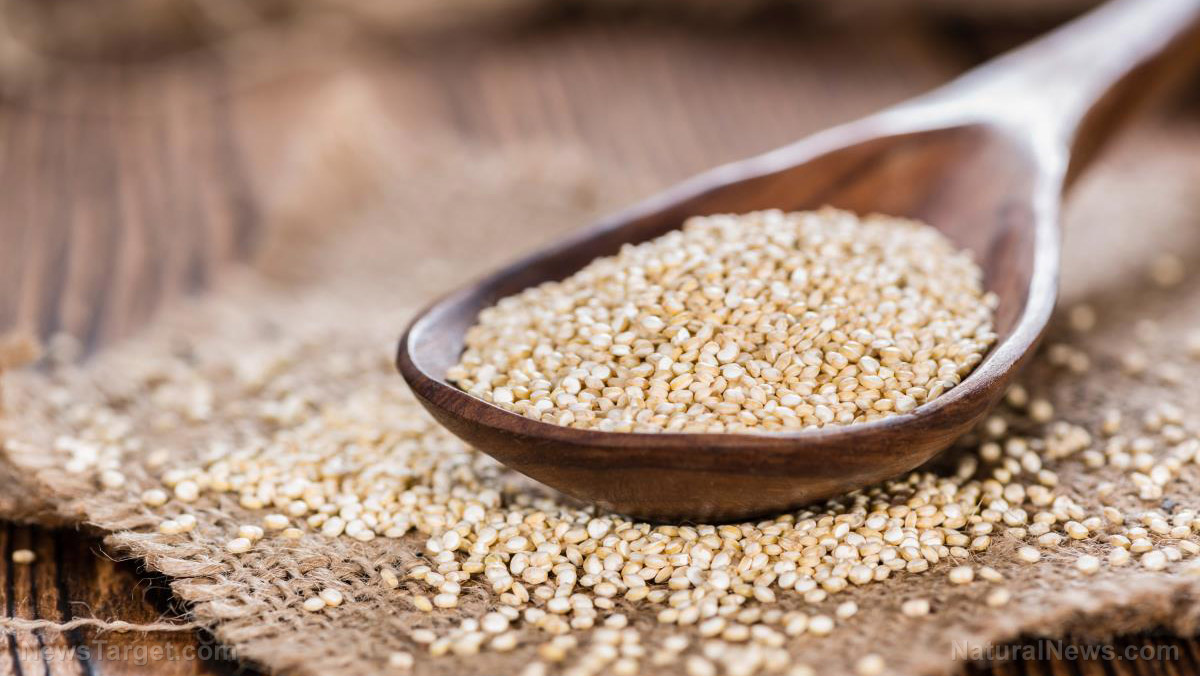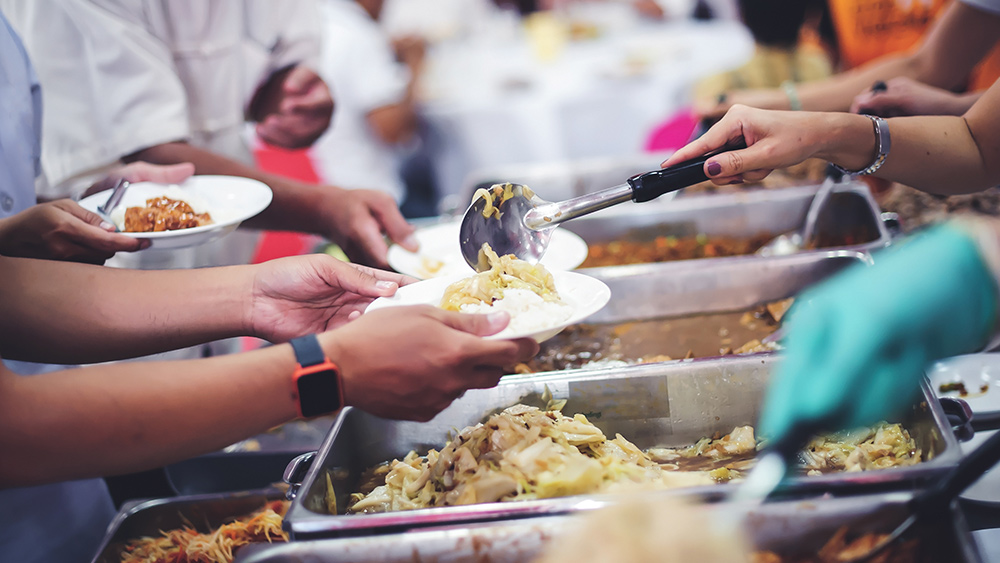3 Ways to save money on your homestead
05/03/2021 / By Zoey Sky

There are many ways to save money on your homestead. You can repurpose old items and avoid unnecessary expenses.
You can also try DIY projects like soap making or grow edible flowers. (h/t to NewLifeOnAHomestead.com)
Be a frugal prepper
To save money on your homestead, start by spending your money more wisely.
Buy in bulk and keep an eye out for sales
Learn how to use coupons and buy in bulk for your pantry and survival stockpile. Store your supplies properly to make them last as long as possible. Keep an eye out for sales and shop when items are much cheaper to make the best of your purchases. Check warehouse or wholesale stores or online sales for good discounts on pantry staples like grain and flour.
Stop spending money on frivolous things
Buying a cup of coffee every morning and eating lunch at your favorite restaurant every workday may not seem too expensive, but these expenses add up. To save money, bring a tumbler of coffee to work and pack your own lunch.
Learn how to preserve your own food
Investing in tools and learning how to home can fruits and vegetables can save you a lot of money in the long run. While you’re at it, you can learn how to dehydrate food for your daily use and survival stockpile. Additionally, home canning ensures that you have access to out-of-season fruits and veggies when winter comes along.
Meal plan
Planning meals helps you save time and money. It also helps you improve your eating habits, especially if you plan meals made with nutritious ingredients right from your home garden. Knowing what to cook ahead of time and having all the ingredients you need also helps prevent the urge to eat junk food or eat out.
Make DIY animal feed
Did you know that you can grow your own feed for animals? If you have extra space in your home garden, grow alfalfa and other feed for your livestock. You can also sell excess crops and store the rest in your barn for the winter months. (Related: Homesteading hacks: 15 Ways to feed your chickens (for free).)
Learn how to make natural foaming hand soap
Learning how to make foaming hand soap at home helps reduce your exposure to harsh chemicals in store-bought soaps. It’s also a fun way to experiment with natural ingredients like dried flowers from your own garden.
Ingredients to choose from
The recipe below can be customized based on your chosen ingredients:
- Coconut oil is a natural oil used to make soap and other beauty products in the Philippines. All-natural foaming soap made with coconut oil can also be used as a dry skin liniment or as a shaving lotion.
- Goat milk is nutrient-rich and it contains natural healing natural compounds. Goat’s milk is full of vitamins A and D, with a high animal fat content that can help revitalize damaged skin.
- Liquid Castile soap is the most common base ingredient for DIY all-natural foaming hand soap and DIY all-natural liquid dish soap. It’s a cost-effective base ingredient and a tall $7 to $15 bottle will last you a long time. Castile soap is a vegetable-based soap. Liquid Castile soap deeply penetrates skin pores with natural antibacterial compounds and it can help clear up acne-prone skin and oily skin issues without drying your skin.
Store the hand soap in a repurposed BPA-free plastic foaming hand soap container or a glass foaming hand soap container with non-plastic tops.
DIY natural foaming hand soap
Ingredients:
- 2 – 3 Tablespoons of base (Liquid castile soap, coconut oil, or goat’s milk)
- 1/2 – 1 Teaspoon of almond oil, olive oil, or vitamin E
- 12 Ounces water well water, boiled, distilled, or filtered
- 8 Ounces of preferred essential oils for scent and extra cleaning power (e.g., lemon oil)
Preparation:
- Pour the water into the foaming soap dispenser until it’s three-quarters of the way full.
- Add your chosen base then pour in the carrier oil or vitamin E.
- Put the lid firmly on the foaming soap dispenser, then shake vigorously to combine all the ingredients.
- Remove the lid from the foaming soap dispenser then add the essential oil.
- Replace the lid again and shake vigorously. The soap is now ready for use.
Notes:
- The measurements used for the recipe are estimates because the actual measurements will depend on the size of the soap dispenser and how thick you prefer the soap to be when squeezed out of the dispenser top.
- If the foaming all-natural liquid soap is too runny, add a drop or two of the carrier oil or vitamin E.
- If the soap is too thick or is clogging up the pump in the dispenser top, add more water.
Grow edible flowers for DIY projects
Growing edible flowers in your home garden means you can have beautiful flowers that can also be used for home remedies or DIY soap.
Here are some flowers that are both beautiful and edible.
Begonias
Both tuberous begonias and wax begonias are safe to eat. The former has edible flowers, stems and leaves.
Begonias blossoms have a citrusy taste and can be used as a garnish for salads. Begonia stems can be used as a substitute for rhubarb in cooking.
Wax begonias have edible leaves and flowers that taste great either cooked or raw. Note that wax begonias may sometimes have a rather bitter aftertaste.
If you grow begonias in a wet environment, they may have a swampy flavor.
Don’t eat begonias if you suffer from conditions like gout, kidney stones, or rheumatism. Begonia leaves and stems contain oxalic acid that can worsen you condition.
Calendula
Calendula is a versatile plant and it can be used to make home remedies or to keep away pesky insects. When eaten, calendula petals have a sharp, powerful taste like saffron with a tangy, peppery kick.
Sprinkle calendula flowers on pasta, rice, or soup. You can also use calendula to make flavorsome salads or herb butter.
Dandelions
Dandelions are usually considered invasive weeds, but they are edible. It’s best to pick dandelions when they are young and have a honey-sweet flavor. Mature dandelions taste more bitter compared to younger ones.
Dandelion buds taste better than the flowers and can be harvested when they are growing close to the ground and about the size of your thumbnail.
Dandelions taste great when eaten raw or steamed or raw. Dandelions can also be tossed into a salad or turned into wine.
Queen Anne’s lace
Note that Queen Anne’s lace is closely related to and looks similar to wild hemlock, which is very poisonous. Learn how to identify both to prevent any fatal mix-ups.
Remember that Queen Anne’s lace has a hairy stem, while wild hemlock has smooth stems that are hollow with purple spots.
Grow Queen Anne’s lace at home so you always have a safe batch of flowers to use. The flowers are related to carrots and they have a light carrot flavor that’s perfect for tasty salads.
There are many ways to save money on your homestead. Be more frugal and try fun DIY projects like soap making or grow edible flowers in your home garden.
Sources include:
Tagged Under: DIY, edible flowers, frugal prepping, home gardening, homesteading, how-to, off grid, preparedness, prepping, self sufficiency, self-reliance, self-sustainability, soapmaking, survival, tips
RECENT NEWS & ARTICLES
FoodStorage.News is a fact-based public education website published by Food Storage News Features, LLC.
All content copyright © 2018 by Food Storage News Features, LLC.
Contact Us with Tips or Corrections
All trademarks, registered trademarks and servicemarks mentioned on this site are the property of their respective owners.





















